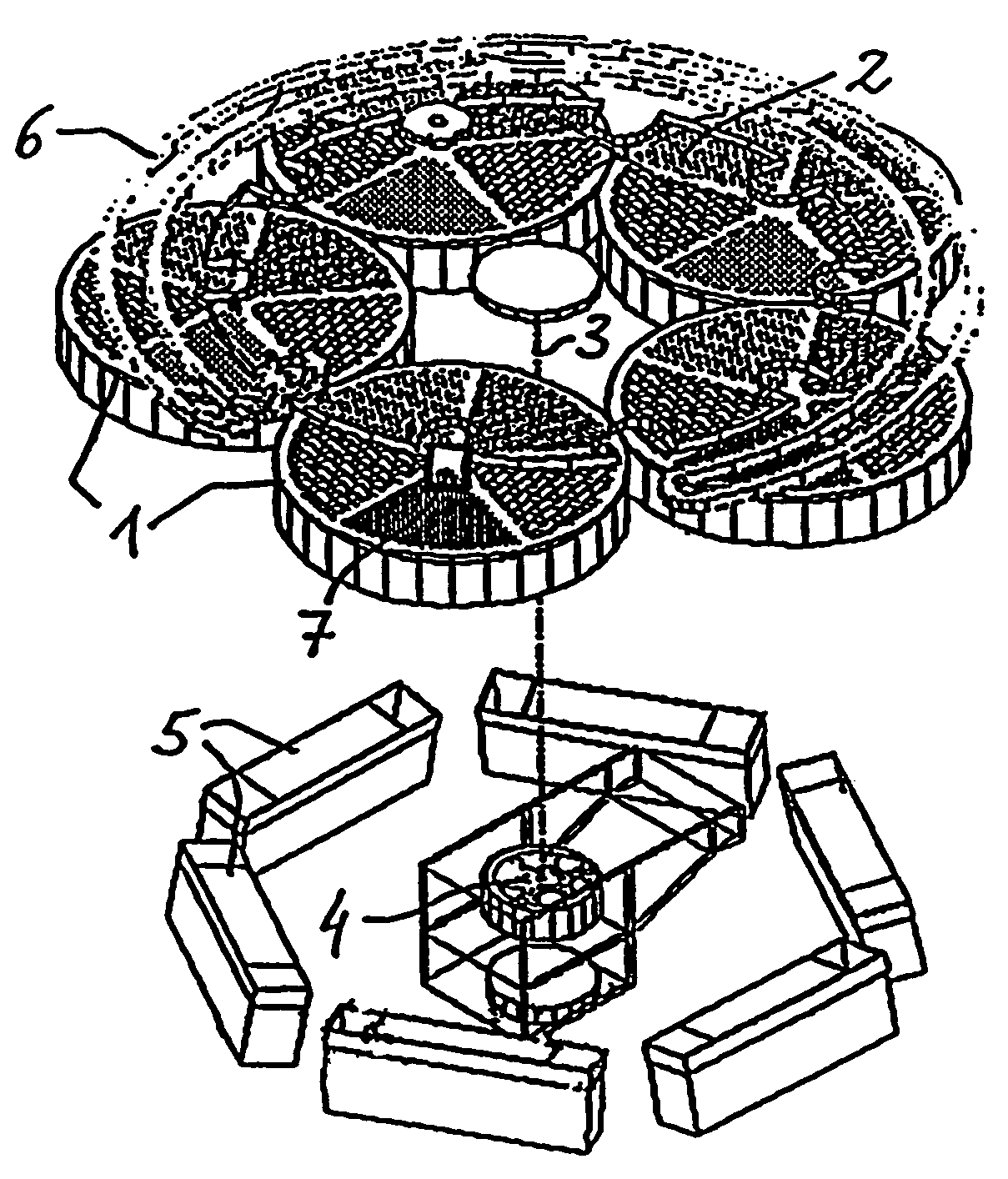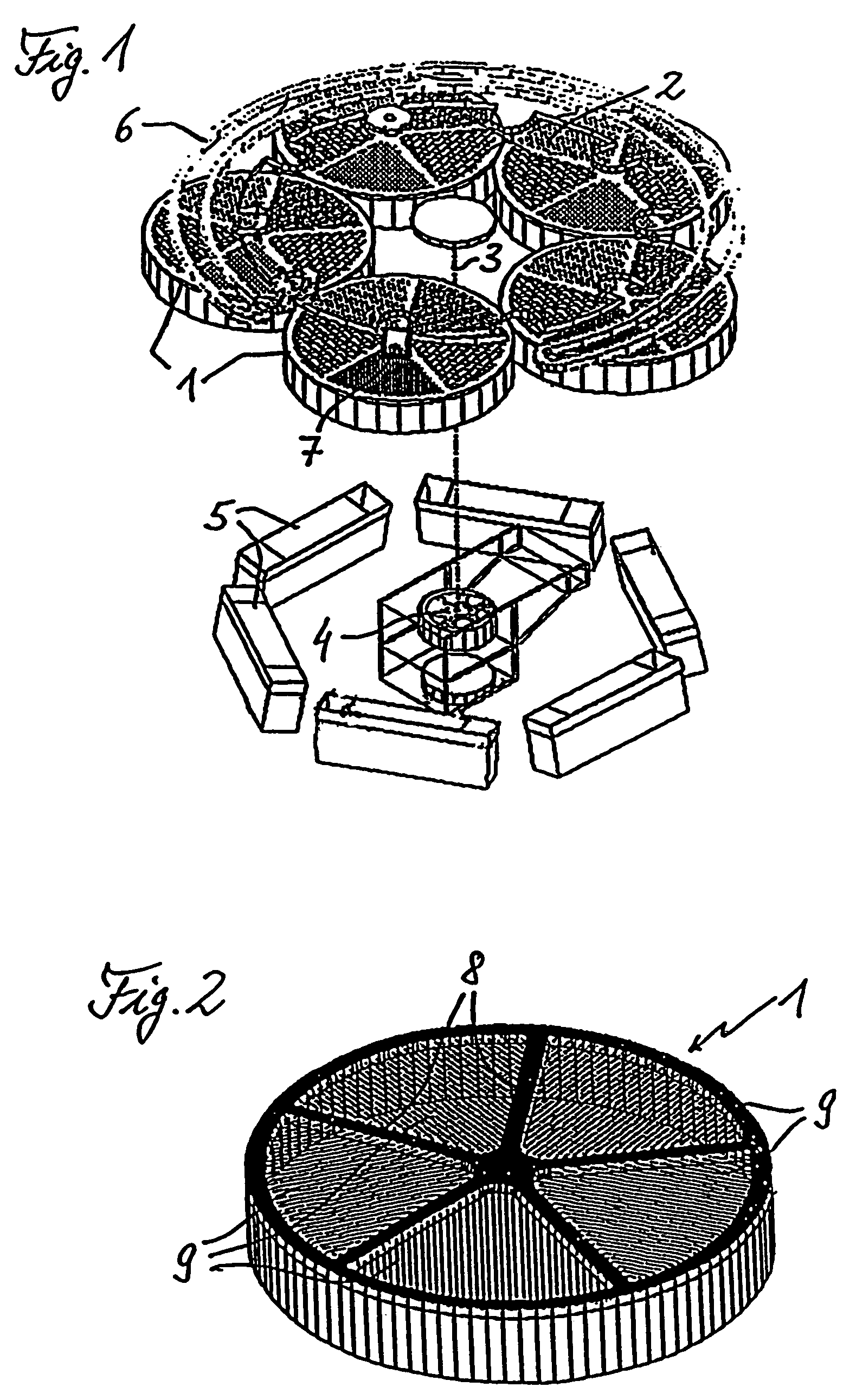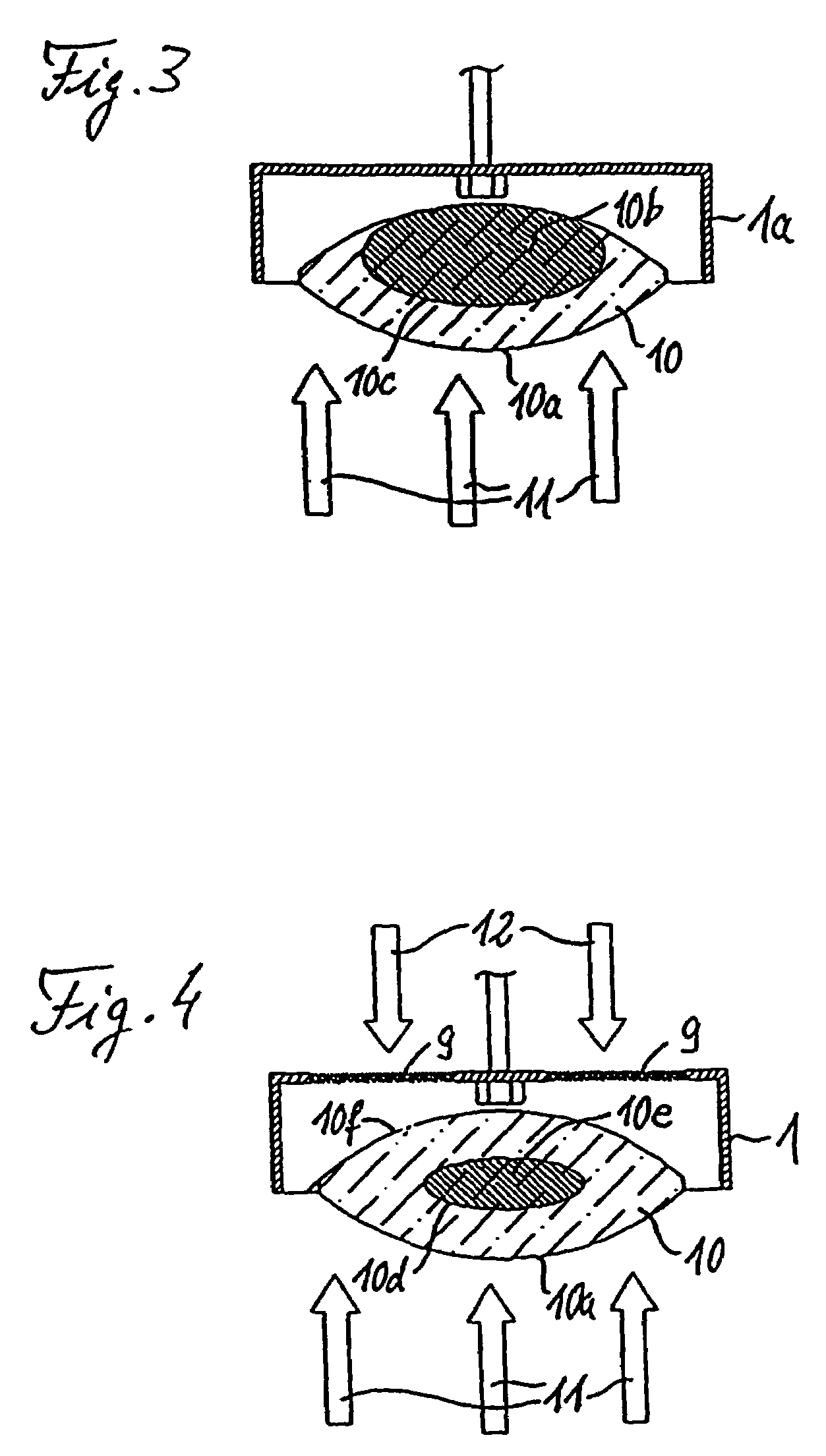Substrate-coating system and an associated substrate-heating method
a substrate heating and substrate technology, applied in the field of substrate heating systems, can solve the problems of long heating period, ineffective use of thermal radiators to heat such substrates, and high so as to avoid excessive mechanical stress of substrates and heat up much faster
- Summary
- Abstract
- Description
- Claims
- Application Information
AI Technical Summary
Benefits of technology
Problems solved by technology
Method used
Image
Examples
Embodiment Construction
[0028]FIG. 1 depicts, in accordance with the invention, a part of a substrate-coating system with which optical components, as well as other types of substrates, may be coated in desired manners. For example, desired coatings, such as multilayer stacks of oxides and fluorides having suitable film thicknesses, may be deposited on, e.g., lenses and other types of optical components, by evaporation at suitable substrate temperatures in order to obtain coatings complying with prescribed sets of specifications regarding their optical properties, environmental aspects, resistance to radiation damage, adhesion to substrates, and resistance to chemical attack.
[0029]In particular, that part thereof depicted in FIG. 1 has a conventional so-called planetary system, upon which five circular, pan-shaped, substrate carriers 1 whose open ends face downward, each of which has an evaporation ring 18 as a substrate-carrier fixture, are mounted in a conventional manner, which has not been depicted in ...
PUM
| Property | Measurement | Unit |
|---|---|---|
| IR wavelength range | aaaaa | aaaaa |
| IR wavelength range | aaaaa | aaaaa |
| IR wavelength range | aaaaa | aaaaa |
Abstract
Description
Claims
Application Information
 Login to View More
Login to View More - R&D
- Intellectual Property
- Life Sciences
- Materials
- Tech Scout
- Unparalleled Data Quality
- Higher Quality Content
- 60% Fewer Hallucinations
Browse by: Latest US Patents, China's latest patents, Technical Efficacy Thesaurus, Application Domain, Technology Topic, Popular Technical Reports.
© 2025 PatSnap. All rights reserved.Legal|Privacy policy|Modern Slavery Act Transparency Statement|Sitemap|About US| Contact US: help@patsnap.com



